Alton N. Sparks, Jr., University of Georgia, Bugwood.org
 licensed under a Creative Commons Attribution 3.0 License.
licensed under a Creative Commons Attribution 3.0 License.
Have you noticed anything strange about your lawn or turf of late? Has the grass weakened, or gradually transitioned to a yellow color?
Are there lifeless patches distributed throughout the entire sod? Do you get a spongy feel as you walk about? These could be signs of white grubs.
What’s worse, if you’re able to snatch up turfgrass without a fight, much like lifting or rolling up a carpet, the infestation is heavy.
You might also have noticed an influx of blackbirds, raccoons, skunks, and even moles on your turf – all indicators that you have a grub infestation on hand.
Sure, your lawn’s infested, but you’re not keen on drenching your turf with chemicals, especially with pets and children around.
This article contains white grub management techniques that’ll show you how to get rid of grubs naturally, without having to disperse chemicals throughout your turf.
This post may contain affiliate links. Please refer to our disclaimer.
How to Get Rid of Grubs Naturally
White grub management is effective when a combination of factors are considered. Well-watered turf is able to tolerate “20 or more grubs per square foot” before damage is evident. Once the damage has commenced in late August or early September, with proper irrigation, turfgrass will be more resilient and tolerant. Hence, soaking your turf on a periodic basis is more advantageous than watering frequently.
Strengthening your turf’s root system through reasonable nitrogen fertilization is also encouraged, as this helps them resist grub injury.
Apply Milky Spore Bacteria (Paenibacillus popilliae)
Paenibacillus popilliae is a bacterial pathogen used in beetle grub control. This formulation, however, is only active against white grubs deposited from the Japanese beetle. Once Paenibacillus popilliae is applied to the soil, grubs become infected and a disease, milky spores, is produced. This disease germinates once ingested and kills the grub.
Milky spores are more potent when applied in late September or early October, provided that the soil’s PH level falls between 6 and 7. This biological weapon provides a residual effect.
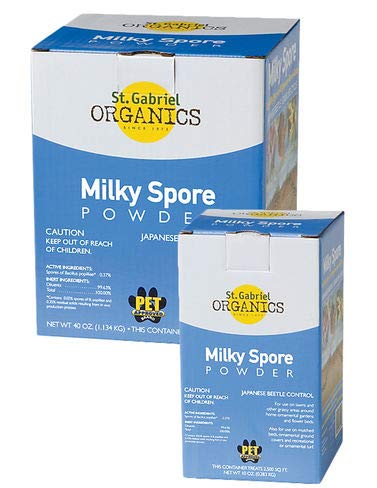
[button-brown url=”https://amzn.to/31Auf4P” target=”” position=”center” rel=”nofollow”]BUY ON AMAZON[/button-brown]
Nematodes (Heterorhabditis bacteriophora)
Nematodes are biological weapons used in white grub management. These grub predators are parasitic, as they attack and kill white grubs by transmitting, or injecting them with a bacterial pathogen. After the insects are killed, their cadavers are used by beneficial nematodes to grow and reproduce.
The best way to learn how to get rid of grubs naturally with nematodes is to follow label instructions. Once you’ve ordered nematodes and they’re in your possession, prompt refrigeration is necessary since nematodes are living agents. When applied to turf, parasitic nematodes should be limited to sun exposure, and irrigation should follow immediately, if you want them to penetrate the soil and kill white grubs, instead of sitting on the lawn’s canopy.
Ensure the nematodes you’re sourcing are Heterorhabditis bacteriophora and not Steinernema carpocapsae. The latter works better when used to control turf caterpillars, rather than white grubs.
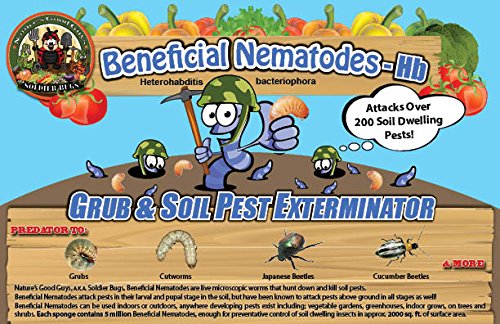
[button-brown url=”https://amzn.to/2Z2hqCx” target=”” position=”center” rel=”nofollow”]BUY ON AMAZON[/button-brown]
Use Bacillus thuringiensis galleriae
Bacillus thuringiensis galleriae is a natural strain of bacteria that produces crystalline proteins consisting of insecticidal properties. This biological agent can be used in beetle grub control, as they kill insects when ingested.
To learn how to get rid of grubs naturally using Bacillus thuringiensis galleriae, it’s wise to follow instructions provided on product labels. Although this white grub management option is effective, it shouldn’t be used in gardens where larval species of conservation concern live.
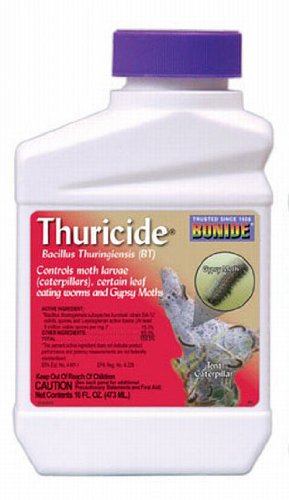
[button-brown url=”https://amzn.to/2YMKdfe” rel=”nofollow” target=”” position=”center”]BUY ON AMAZON[/button-brown]
Entomophagous Fungi (Metarhizium brunneum)
Entomophagous is a fungal pathogen of various insect species. When Entomophagous fungi comes in contact with white grubs, they germinate inside the insect, which is later killed. How effective these biological fungi vary, and mostly produce a uniform effect when applied in fall.
Irrigation is recommended after Metarhizium brunneum is added to the turf to ensure it seeps into the soil where grub worms feed.
Beetle Traps
Using this white grub management technique to get rid of grubs is more preventative than curative. Preventing adult beetles from depositing their eggs may hinder a grub infestation, to begin with.
“Spectracide Bag-A-Bug Japanese Beetle Trap” is a nifty option to stifle beetle reproduction in your garden. These beetle traps use potent pheromones to entice and lure beetles, then trap them so they cannot escape to mate and deposit eggs, which would later grow into grubs.
Beetle traps are best suited for gardens, but can be used for lawns, but would take greater effort depending on the size of your turf.
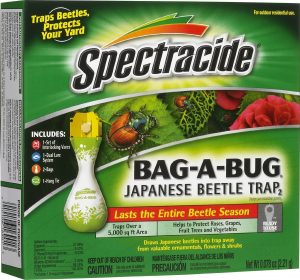
[button-brown url=”https://amzn.to/2KuNerI” target=”_self” position=”center” rel=”nofollow”]BUY ON AMAZON[/button-brown]
Neem Oil
Neem oil is a botanical pesticide which is extracted or sourced from the tropical neem tree. The extract is replete with insecticidal components. This makes it a great alternative to rid your garden of grubs, the natural way.
Neem oil could dissuade grub worms from feeding on your turf and plant’s root system, laying eggs, and even stunt their growth. To apply neem oil to manage a grub situation, you may need to combine with water and add to a spray bottle. When in doubt, follow the instructions on the label.
In most cases, neem oil is most suited for garden areas or small region, unless you have a robust and large enough equipment to distribute neem oil throughout your lawn.
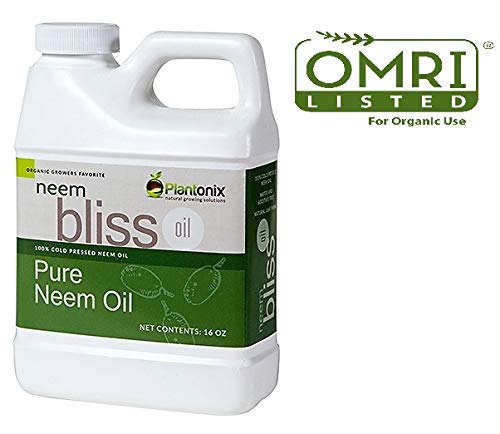
[button-brown url=”https://amzn.to/2MVo2MO” target=”” position=”center” rel=”nofollow”]BUY ON AMAZON[/button-brown]
Parasitic Wasps

Parasitic wasp by CSIRO
As noted earlier, the presence of skunks and other varmints could indicate the presence of white grubs. Parasitic wasps, mainly dark-colored, found hovering above your lawn, is another sign to look out for.
These wasps serve a dual purpose, as they inject white grub worms with a single egg, which later kills them.
Beetle Grub Control, Conclusion
It takes patience and time to rid your turf and garden of grubs. In most cases, a single method might not be effective to rectify the situation. In this case, it’s best to take an integrated approach or various methods.
Share the Love
We love sharing pest control tips and tricks to improve situations at home and bring your family peace of mind, by providing articles such as this one – White Grub Management: How to Get Rid of Grubs Naturally.
To support our venture and spread awareness, we kindly ask that you share this post with friends and acquaintances you believe are suffering from an infestation. Social media is a great avenue to use, as people use these platforms a lot.
We also recommend that you follow us on social media to keep up with the latest news and what awesome sauce we’re cooking up on the blog.
Also, feel free to look around. We have plenty of content you’ll love. Until then, “Walk good.”






